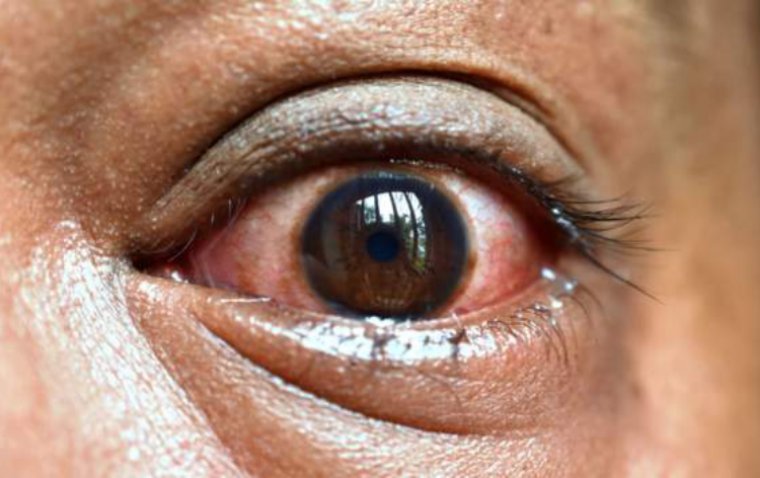
Red Eye Disease Alert in Mombasa: Prevention and Management Measures
Mombasa County Health Department has sounded an alarm concerning the surge in red eye disease cases, also known as conjunctivitis. County data from public facilities reveals a significant surge, with over 1,000 reported cases in Mombasa alone in the last two days. This has raised concerns among both health authorities and residents in Mombasa, prompting a collective effort to address the outbreak.
Despite the increase in cases, Mombasa has opted against implementing a lockdown, opting for strategic prevention measures. These include regular washing and sanitizing of hands and avoiding contact with potentially contaminated surfaces. Circulars have been issued to churches, schools, and markets to ensure the strict adherence to these health measures.
What is Red Eye Disease?
Red eye disease, or conjunctivitis, manifests as an inflammation of the conjunctiva, the clear membrane covering the eye surface. It can be triggered by viral or bacterial infections, exposure to allergens, or irritants, leading to uncomfortable symptoms such as redness, itching, and discharge.
Hygiene Measures Urged
Health authorities stress the pivotal role of heightened hygiene practices in containing the spread of red eye disease. Here are key hygiene measures to follow:
● Frequent Hand Washing: Wash your hands regularly with soap and water, especially after touching your eyes or face. Handwashing helps prevent the transfer of bacteria or viruses from contaminated surfaces to the eyes.
● Avoid Touching Your Face: Refrain from touching your face, particularly your eyes, to minimize the risk of introducing pathogens into the eye area. If you need to touch your face, ensure your hands are clean.
● Use Hand Sanitizer: When soap and water are not readily available, use an alcohol-based hand sanitizer with at least 60% alcohol content. Apply it thoroughly to all parts of your hands.
● Disinfect Surfaces: Regularly disinfect surfaces that come into frequent contact with hands, such as doorknobs, countertops, and electronic devices. This helps prevent the spread of infectious agents.
● Avoid Sharing Personal Items: Refrain from sharing personal items such as towels, pillows, and makeup, as conjunctivitis can spread through contact with contaminated items.
● Practice Respiratory Hygiene: Cover your mouth and nose with a tissue or your elbow when coughing or sneezing. Dispose of tissues properly and wash your hands immediately afterward.
● Use Clean Linens: Change and wash pillowcases, bed linens, and face towels regularly to prevent the accumulation of infectious agents that may come into contact with the eyes.
● Wear Sunglasses: If you have red eye disease, wearing sunglasses can help protect your eyes from irritants and reduce the risk of spreading the infection to others.
● Follow Healthcare Guidelines: If prescribed medication or eye drops by a healthcare professional, follow the recommended dosage and application instructions to manage the symptoms effectively.
● Avoid Eye Rubbing: Resist the urge to rub your eyes, as this can exacerbate irritation and potentially spread the infection.
Home Remedies for Red Eye Disease
In response to the outbreak, residents have resorted to using home-based remedies, including tea bags, to treat the symptoms of conjunctivitis. However, it's essential to note that home remedies are not a substitute for professional medical advice. If you suspect you have conjunctivitis, consult with a healthcare professional for an accurate diagnosis and appropriate treatment.
Here are some home remedies that may help alleviate symptoms:
1. Warm Compress: Applying a warm compress to the affected eye can help reduce irritation and discomfort. Use a clean cloth soaked in warm water and gently place it over the closed eye for 5-10 minutes.
2. Cold Compress: Alternatively, a cold compress can be soothing, especially if there is significant redness and swelling. Use a clean cloth with ice wrapped in it, applying it for short intervals.
3. Tea Bags: Chilled tea bags, particularly chamomile or green tea, can be placed on closed eyes for around 15 minutes. The anti-inflammatory properties may help alleviate redness and inflammation.
4. Artificial Tears: Over-the-counter artificial tears can provide lubrication and relieve dryness. Choose preservative-free options and follow the recommended usage instructions.
5. Honey and Water Solution: Mix a teaspoon of honey with a cup of boiled and cooled water. Use a clean dropper to apply a couple of drops to the affected eye. Ensure the mixture is mild and does not cause irritation.
6. Cucumber Slices: Chilled cucumber slices can have a soothing effect on irritated eyes. Place them over closed eyes for 10-15 minutes.
Conclusion
As the red eye disease cases continue to rise in Mombasa, a concerted effort is underway to raise awareness and reinforce hygiene practices. Residents are strongly encouraged to promptly seek medical advice upon experiencing symptoms, ensuring swift and effective management of the condition. Vigilance, education, and a collective commitment to hygiene remain paramount in curbing the further spread of red eye disease.
Reference:
https://www.kenyanews.go.ke/mombasa-county-health-department-issues-alert-over-red-eye-disease/
(1).jpg)










